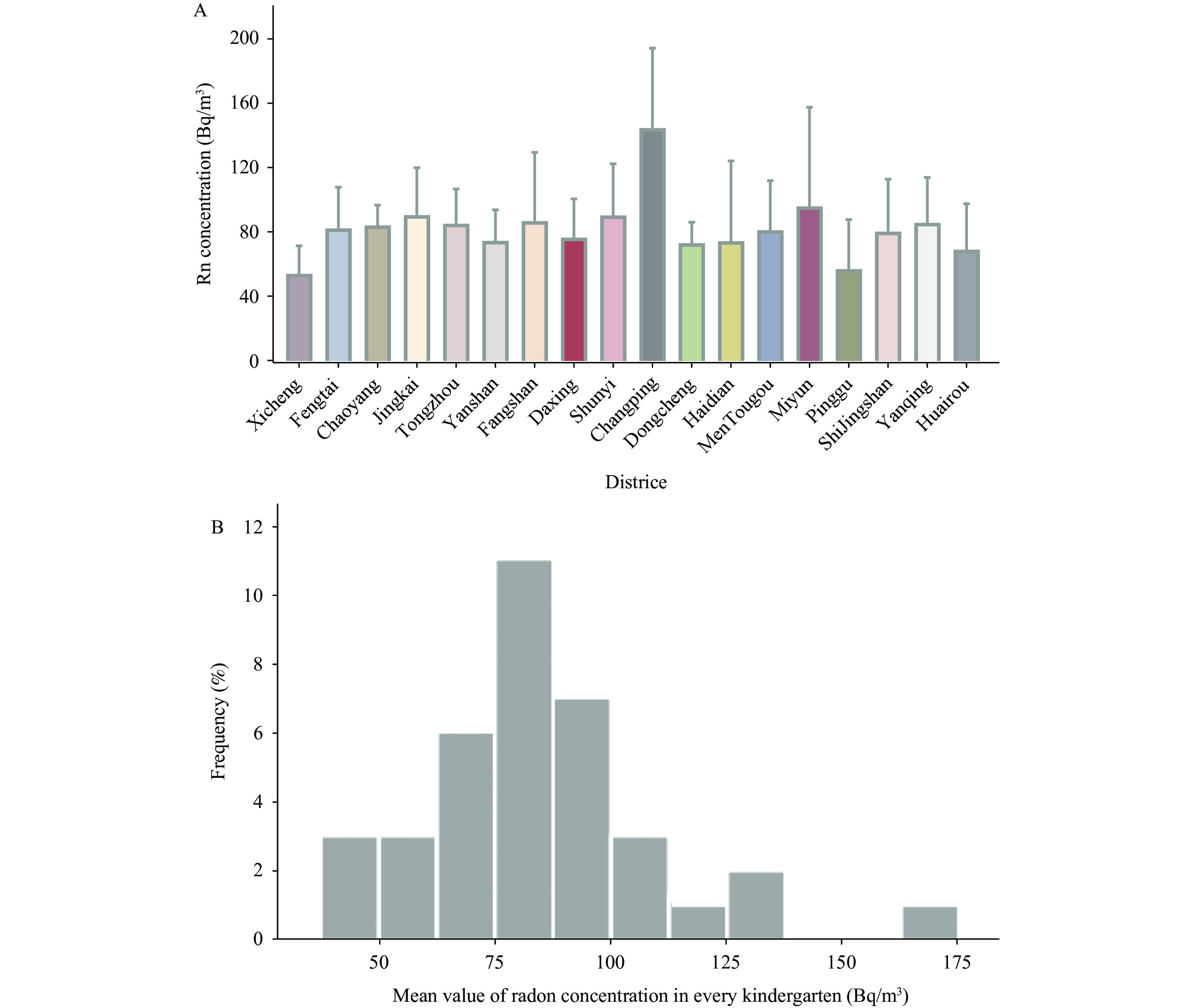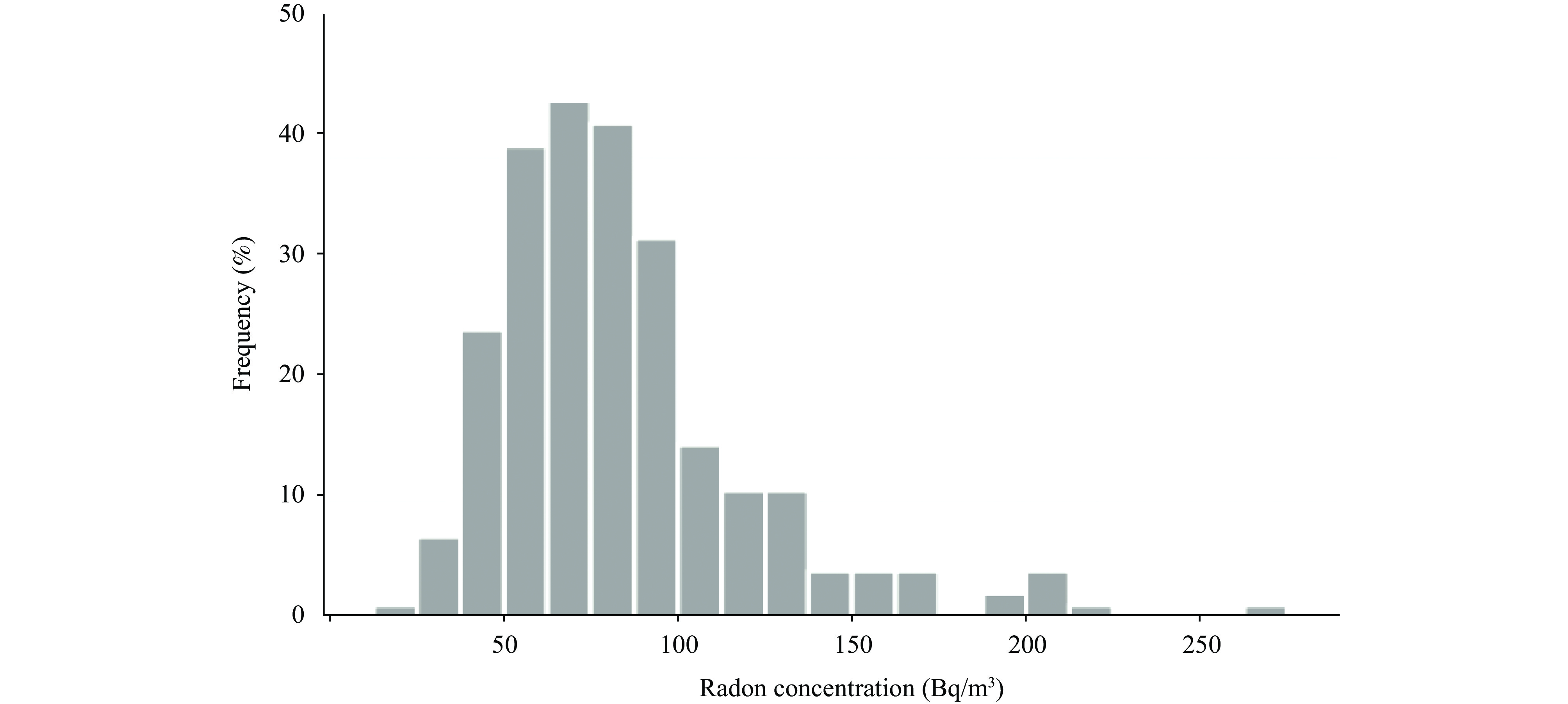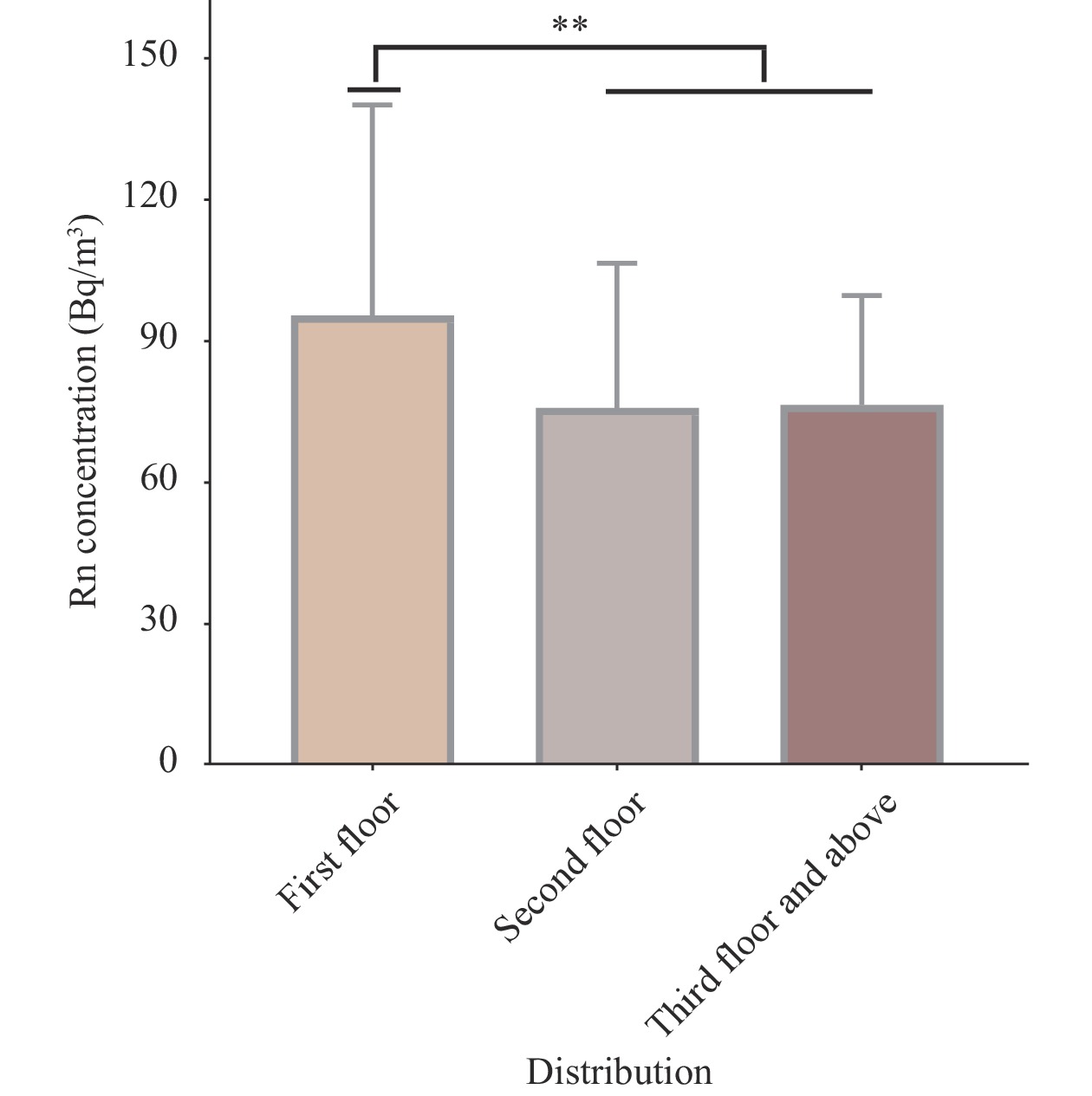-
Radon (222Rn or 222radon) is a naturally occurring radioactive gas that is both colorless and odorless. It is frequently encountered in human living environments, predominantly as 222Rn. The International Agency for Research on Cancer (IARC) has classified radon as a Group 1 carcinogen, indicating its well-established cancer-causing properties. Additionally, the World Health Organization (WHO) has identified radon as one of 19 recognized carcinogens. Statistical evidence demonstrates that exposure to radon is the second leading cause of lung cancer, following tobacco smoking (1).
The critical need to address indoor radon exposure in educational settings for young children is underscored by their increased susceptibility to the adverse effects of this radiation. Due to their rapid physiological development and less mature immune systems, young children are particularly vulnerable to indoor radon and its decay products. Furthermore, when normalized for body weight, the respiratory rates of young children are 50% greater than those of adults (2), enhancing their risk when exposed to elevated radon levels in indoor environments. Consequently, the potential harm to both the physical and cognitive development of children from indoor radon radiation demands heightened scrutiny and intervention.
In 1988, the IARC classified radon as a known human carcinogen. Responding to the escalating concerns over radon’s health risks, the Indoor Radon Abatement Act was enacted to lower indoor radon concentrations nationwide to match outdoor levels (3). Additionally, the International Commission on Radiological Protection (ICRP) publication 126 (2014) recommended monitoring indoor radon levels in kindergarten facilities as a part of broader radon surveillance measures. It emphasized the importance of preventing and reducing radon exposure in public spaces like kindergartens (4).
In order to investigate indoor radon levels in kindergartens and contribute to the establishment of monitoring and prevention guidelines, a study was carried out in Beijing. Thirty-seven kindergartens in 18 administrative districts were chosen, and indoor radon levels were monitored from June to October 2023. The objective was to assess the prevailing indoor radon concentrations in kindergartens throughout the city.
-
Beijing is comprised of 18 districts. To achieve representative surveillance, 37 kindergartens were selected through random sampling. Within these kindergartens, surveillance points were designated in various locations, including sleeping quarters, play areas, and administrative offices, resulting in a total of 252 surveillance points. These points provided extensive coverage of the environments frequented by the kindergarten staff and children. As per our conceptualized monitoring strategy, we deployed a cumulative detector at each surveillance point. In order to obtain precise data, these detectors were strategically placed no less than 30 centimeters from any wall and positioned away from zones with direct airflow, such as those near doors, windows, and air conditioning units.
The indoor radon concentration at each monitoring point was assessed using solid track detectors (5). Information regarding the physical conditions of the detector location, building structure, and other pertinent factors was documented, including the placement and collection dates. Monitoring spanned over 3 months, reflecting typical kindergarten operations. CR-39 was the track material in the solid track detectors, manufactured by the FUKUVI Chemical Company in Japan. Following collection, CR-39 chips were extracted, the etched using a 6.25 mol/L NaOH solution, and the track density was calculated by counting tracks under a microscope.
A dedicated database was established to store the gathered data, which was subsequently analyzed using SPSS (version 21.0; IBM, Armonk, US). Non-parametric tests were utilized to compare multiple sample means, with a significance level set at P<0.05.
-
Statistical analysis was performed on radon levels from 252 monitoring sites, revealing an average indoor radon concentration of 84.3 Bq/m3 (Figure 1). Concentrations ranged from 12.9 to 263.5 Bq/m3, with a median value of 76.8 Bq/m3, detailed in Table 1. Figure 1 shows that 64.3% of sites had radon levels within the 50.0 to 100.0 Bq/m3 range. Additionally, 13.1% reported levels below 50.0 Bq/m3, and 20.2% had levels ranging from 100.0 to 200.0 Bq/m3. Importantly, 2.4% of sites recorded radon concentrations exceeding 200.0 Bq/m3.
Descriptive index Indoor radon concentration (Bq/m3) Average value 84.3 95% confidence interval for
the meanlower limit 79.7 upper limit 88.9 Average values after 5% were pruned 80.9 Median 76.8 Variance 1,377.5 Standard deviation 37.1 Minimum value 12.9 Maximum value 263.5 Overall spread 250.6 Interquartile range 37.1 Skewness 1.6 Kurtosis 3.6 Table 1. Results of indoor radon concentration for 252 surveillance points.
The statistical analysis from Figure 2 indicated that indoor radon levels in 37 kindergartens across 18 administrative districts were all below the national standard limit of 300 Bq/m3 (GB/T 16146-2015) (6). However, 7 kindergartens had radon concentrations exceeding 100 Bq/m3. Notably, two kindergartens in Changping District had average indoor radon levels of 144.7 Bq/m3 (median 155.7 Bq/m3), significantly higher than other areas (P<0.05).
 Figure 2.
Figure 2.The indoor radon concentration situation of 37 kindergartens. (A) The average indoor radon concentration of kindergartens. (B) Frequency distribution of the mean radon concentration of 37 kindergartens.
In our study, we analyzed the indoor radon concentrations in 37 kindergartens. A total of 108 surveillance points were placed on the first floor, 80 on the second floor, and 64 on the third floor or above. The monitoring results for each floor are shown in Figure 3.
On the first floor, indoor radon concentrations varied from 36.4 to 263.5 Bq/m3, averaging 95.3 Bq/m3 (median: 84.2 Bq/m3). The second floor showed levels from 12.9 to 172.3 Bq/m3, averaging 75.7 Bq/m3 (median: 69.1 Bq/m3). Radon concentrations for the third floor or higher ranged from 37.4 to 131.5 Bq/m3, with an average of 76.3 Bq/m3 (median: 75.1 Bq/m3).
Our analysis reveals a significant discrepancy in indoor radon levels among various floors (P<0.05), with the highest concentration observed on the ground floor.
The mean indoor radon concentration in the children’s area was 80.2 Bq/m3 (median 75.1 Bq/m3, range: 12.9–204.4 Bq/m3). In the staff’s area, the mean radon concentration was 92.5 Bq/m3 (median 80.1 Bq/m3, range: 34.1–263.5 Bq/m3). Notably, six locations in kindergartens recorded radon levels exceeding 200.0 Bq/m3 in 2023; these areas require continued monitoring in 2024. All 37 kindergartens monitored in this study were buildings constructed prior to 2016, highlighting a future need to enhance the surveillance and prevention efforts for kindergartens built after 2016 in accordance with new standards.
-
The current national standard GB/T 16146-2015 “Requirements for the Control of Indoor Radon and Its Progeny” (6) establishes specific indoor radon concentration limits for buildings constructed pre-2016 and post-2016: buildings constructed before 2016 should not exceed 300 Bq/m3, and buildings constructed after January 1, 2016, should not exceed 100 Bq/m3. However, the gradual decay of radon and its progeny, combined with factors like building materials and soil (7), challenges the effectiveness of these limits. The extended half-life of ²²⁶Ra (1620 years) contributes to this issue (8), questioning the scientific foundation of the specified radon concentration thresholds for buildings pre-2016 and post-2016.
Children are more susceptible to radiation than adults (9). Prolonged exposure to indoor radon levels above 100 Bq/m3 is a significant health concern, especially for children (10-11). It is crucial for governmental bodies, kindergartens, and health agencies to give priority to mitigating this issue. Specific guidelines for indoor radon limits tailored to children, accompanied by prevention and control measures, should be established in China. These actions will enhance the supervision, assessment, and prevention of indoor radon levels in kindergartens.
In this study, we evaluated indoor radon levels across 37 kindergartens in Beijing, uncovering that 18.9% had radon concentrations above the threshold of 100 Bq/m3, deemed relatively high. Nonetheless, there is a notable absence of radon monitoring in kindergartens beyond Beijing. Given the variability in geological conditions, the 226Ra levels in other regions could potentially exceed those in Beijing, presenting a significant health threat to children across China. Despite the existence of national guidelines for indoor radon prevention and control in buildings (GB/T 16146-2015), there are no tailored standards for kindergartens. Consequently, kindergartens tend to adhere to general building regulations, which may be insufficient. Notably, certain Beijing kindergartens exhibited radon levels reaching up to 263.5 Bq/m3. This underscores the urgency of expanding radon surveillance in kindergartens throughout various provinces and cities, facilitating a science-based assessment that could prompt the formulation of dedicated standards to protect the health of young children.
Radon is an established carcinogen, specifically linked to lung cancer (12), yet its association with childhood leukemia remains under-acknowledged. Studies have confirmed radon’s role in the etiology of leukemia (10). Observations indicate a heightened prevalence of childhood leukemia in certain regions of our country (13), prompting an investigation into the potential contribution of indoor radon to this pattern. Notably, children aged 2 to 6, who predominantly spend their time within kindergarten settings, are potentially at greater risk. It is essential to routinely assess radon levels in these environments to safeguard children’s well-being during their pivotal developmental years. Research has demonstrated that radon concentrations are typically higher on lower floors of kindergartens, a factor closely associated with the properties of building materials and underlying soil (14). The structural designs of these establishments, often characterized by small windows, contribute to suboptimal ventilation, exacerbating radon accumulation. Moreover, children, by virtue of their shorter stature and proximity to the ground where radon concentrates, are exposed to greater levels of this gas compared with adults. Recognizing the significant health implications of indoor radon exposure for children, it is imperative to raise awareness, continually monitor radon levels in kindergartens, and establish rigorous radon control standards tailored for such institutions.
In conclusion, indoor radon concentrations in 37 kindergartens were found to be below the maximum limit of 300.0 Bq/m3 as per the national standard GB/T 16146-2015 for building construction. However, 18.9% of the kindergartens exceeded the 100.0 Bq/m3 limit specified for new buildings by the same standard. Currently, there is no specific indoor radon control standard for kindergartens in China. It is recommended to enhance monitoring and establish a national standard to regulate indoor radon concentrations in kindergartens.
-
No conflicts of interest.
-
Hongxing Cui and Bing Shang for their help with analysis and project guidance. CDCs in various districts (Xicheng, Fengtai, Chaoyang, Jingkai, Tongzhou, Yanshan, Fangshan, Daxing, Shunyi, Changping, Dongcheng, Haidian, Mentougou, Miyun, Pinggu, Shijingshan, Yanqing, and Huairou districts) for their assistance in determining detector locations.
HTML
| Citation: |




 Download:
Download:





